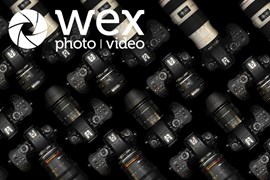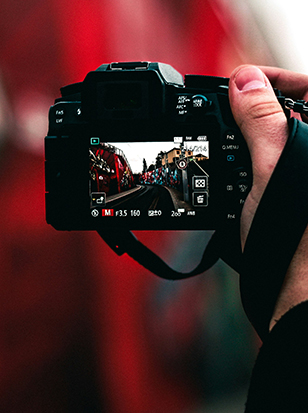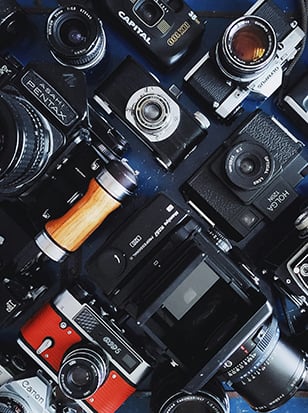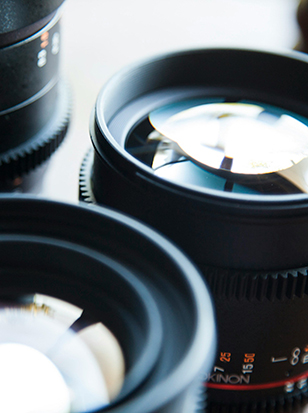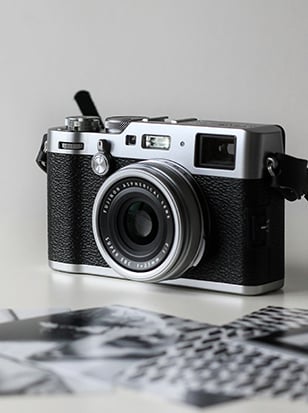
The best accessories for wildlife photography can open up your options in all sorts of unexpected ways. When you think about gear for wildlife photography, you’re probably picturing big telephoto lenses and cameras with fast burst rates. While these things can be helpful, you’d be surprised what a difference a few inexpensive accessories can make.
Our team of experts has put together this guide to help you find the right accessories for wildlife photography. These are things you may not have thought about, many of which will cost very little in terms of finances or camera-bag space — but all of which can make a real, practical difference to your wildlife photography.
For more gear tips, check out our guide to the best lenses for wildlife, and we also have an interview with wildlife photography pro Tom Mason where he runs through his kit bag essentials. But for now, on with the list!
Quick Navigation
Our top picks
Wildlife Watching Bean Bag 1.5Kg - Realtree Xtra with Unfilled Liner
Beanbags are ideal for resting cameras and scopes on in locations where a tripod is impractical or too unsubtle. There is a velcro opening along the length of one of the bags which you can use to fill the bean bag with beans, rice, corn, et cetera. For a lightweight bean bag, you can instead use polystyrene balls or packing. Covers made from shower proof material.1.5Kg - 30 cm x 23 cm (12" x 8.5")
£19.49 View
If you’ve visited a nature reserve or wildlife centre, you’ll know how impractical using monopods and tripods can be if you’re holed up in a hide. Bean bags are the perfect solution to this problem, allowing you to safely rest and support a long lens on a window ledge or post.
This Wildlife Watching Bean Bag has a velcro opening along the length of one side so it can be filled with rice, corn or any similar material that moulds around the shape of the lens’s barrel, greatly aiding its stability.
Vanguard Alta Sky 66 Backpack - Up To 800mm Lens
Specifically designed to carry super-telephoto lenses (up to 600mm f4 or 800mm f5.6) attached to a Pro DSLR, the Vanguard Sky 66 Backpack is an ergonomic bag with an Air System back, harness, and waist belt. It features multiple dedicated pockets, organisers, and connectors, and even has space for a 9" tablet. The included rain cover ensures that your equipment will stay dry no matter the weather.
£239.99 View
If you’re beginning to specialise in wildlife photography, then the chances are that at some point you’re going to pick up a dedicated telephoto prime or zoom to give you the reach needed to capture images of distant subjects.
However, most camera backpacks aren’t large enough to accommodate these bulkier optics, and the carry cases that they’re shipped in aren’t especially convenient if getting to a location involves walking. This is where Vanguard’s Alta Sky 66 steps in: it’s a camera backpack designed from the ground up with large lenses in mind.
The main compartment of this bag offers enough space to fit a pro-DSLR with a 600mm f4 lens or even some 800mm optics attached. An adjustable, well-padded cradle supports the camera body in the centre of the bag and secures the lens making sure that it’s well protected, particularly around the delicate mount connection.
The bag’s ergonomic harness system is fully adjustable and features a well-padded and breathable 3D back for comfort. Adjustable shoulder straps can be set to one of three height positions, perfectly contouring to the user’s back and torso, while an adjustable sternum strap and supporting waist belt can also be found. If you find yourself regularly using telephoto primes and the like, then the Alta Sky 66 is for you.
If there’s one thing you can never be too prepared for in Britain, it’s rain. Despite the weather-sealing promises of cameras, getting caught in a heavy downpour has the potential to cause serious damage to your equipment, and in the worst case scenarios could even result in your gear being written off.
Allowing you to retain access to all of your camera’s controls and keep shooting when things get a bit wet is Manfrotto’s Pro Light E702 rain cover. It provides protection from the elements for a DSLR with a 70-200mm f2.8 or smaller attached, though you can also protect a larger lens by attaching the additional Pro Light Extension Sleeve.
Manufactured from transparent TPU, it allows for easy monitoring of your device at all times, but will stop any rain or dust from making its way into your camera. It’s suitable for use on a tripod, but also closes at the bottom for handheld use. It packs down to a small size, so leave it in your camera bag, and never be caught out by the weather again.
Celestron Trailseeker 10x42 Binoculars
Free Celestron Backpack worth £28.50
The Celestron Trailseeker 10x42 Binoculars features a lightweight magnesium alloy frame that is durable and fully waterproof for use in any weather conditions. These high-level outdoor performance binoculars are equipped with phase and dielectric coated BaK-4 prisms which dramatically increase light transmission through the prism system for unrivalled image quality and views. The Trailseeker is tripod adaptable and offers a close viewing distance of 2.5m for detailed, up close observation of subjects in close proximity.
£269.00 View
Take the next step up from those budget garden binoculars that you’ve been using and consider investing in Celeston’s Trailseeker 10x42.
Featuring a lightweight magnesium alloy frame that’s durable and fully waterproof, these high-level binoculars with 10x magnification have phase- and dielectric-coated BaK-4 prisms that dramatically increase light transmission for unrivalled image quality and views. Tripod-adaptable, the Trailseeker 10x42 binoculars also offer a minimum focusing distance of just 2.5m for up-close observation of subjects.
Hahnel Captur Remote - Sony

The Hahnel Captur Remote combines two products in one - a wireless remote shutter release and a remote flash trigger. The package includes a transmitter and a receiver which allow you to wirelessly release the shutter on your camera or trigger the flash on your flashgun from up to 100m away. Whether you are a hobbyist or more advanced photographer, the new Captur remote controls will help you to expand your photography expertise and create some new and interesting shots. Includes cable to fit Sony cameras (see Further Details tab for compatibility). AA batteries included.
£64.99 View
Hahnel Captur Remote - Canon

The Hahnel Captur Remote combines two products in one - a wireless remote shutter release and a remote flash trigger. The package includes a transmitter and a receiver which allow you to wirelessly release the shutter on your camera or trigger the flash on your flashgun from up to 100m away. Whether you are a hobbyist or more advanced photographer, the new Captur remote controls will help you to expand your photography expertise and create some new and interesting shots. Includes cable to fit Canon, Pentax, and Samsung cameras (see Further Details tab for compatibility). AA batteries included.
£64.99 View
When you’re starting out with wildlife photography, it’s easy to get blurry eyes and become attracted to those huge shiny lenses that you think you need. Instead why not get into wildlife photography in a different way and move your camera closer to your subject whilst keeping your distance? The great thing about this way of shooting is you probably don’t need a new camera or lens, but instead just a remote release.
Now these little accessories come in a variety of models and range in prices from tens to hundreds of pounds, but all work around the basic principle of transmitting the triggering signal from a handheld unit to a camera positioned where you think your subjects will appear. You will most likely want a radio trigger as they work over longer ranges and don’t require line of sight to work, perfect for outdoor use or for tricky positions.
If you want to get a little more technical, more recent cameras and systems can also transmit the live data from the camera to a handheld device. Many allow you to alter and change exposure settings, focus points and more through live view for the perfect shot.
While many brands offer their own proprietary remotes, the Hahnel Captur is a good option that’s compatible with a broad range of cameras. Available for Canon, Nikon, Sony, Fujifilm and Olympus/Panasonic, it provides up to 100m range of wireless transmission, allowing you to keep a safe distance from your camera (and elusive subjects)
Phottix 5-in-1 Light Multi Collapsible Reflector - 56cm

The Phottix 5-in-1 Light Multi Collapsible Reflector - 56cm is a combination of five separate reflector panels. These consist of Gold, Silver, White, Black, and Translucent. Suited to on-location shooting as well as varied studio setups, this lighting tool is ideal for portraiture, still life, close-up, nature, and product photography. As this is compatible with all available light sources to include daylight, tungsten, and flash, this multi-collapsible reflector is a great option for both beginner and pro-level digital creatives.
£20.00 View
Wimberley The Plamp II

Finally there is a way to stabilise those aggravating windblown subjects! The Plamp II is an easily positionable arm which can be used to hold macro subjects and other useful objects. One end of the Plamp clamps to your tripod while the other grasps the object. One day in the field with a Plamp (or two) and you will begin to realise its full potential. The Wimberley Plamp II is a must for any macro enthusiast.
£64.00 View
Nature photography covers all types of subjects and for those of you interested in the smaller creatures and plants of the world, a reflector can be an excellent way of throwing some additional light into your subject for creative images.
Simple and relatively cheap, these fold-out disks have a reflective surface on either side (often in a variety of colour casts) for adding light to your images. For most purposes, a gold/white reflector creates the most natural-looking results, as silver reflectors throw a harsher, punchier and less natural looking light.
With reflectors being rather large and unwieldy at times, holding them in position (if you don’t have an assistant handy) can be tricky. Wimberly has come to the rescue, however, with the Plamp. It’s a small clamping arm that can help hold accessories like a reflector in place, leaving your hands free for composing and working the camera.
Wildlife Watching Bag Hide - C33 Light Weight Hardwoods Green (not proofed)
Bag hides can be used as an all over hide/cover for you, your camera, chair and tripod or you can use the bag hide just over the camera, tripod, head and shoulders to break up you shape and outline. The hide has one opening window with insect and scrim net. You can also put your head through the window and use the hide as a cape. Large opening at front for lens with velcro adjustment. The bag hide can also be used like an old victorian camera. Drape it over your tripod, then pull over your head and shoulders for more cover. Rolls up to fit in camera bag or rucksack.
£66.99 View
With some subjects, it’s important to stay concealed in order to get close-up images. Wearing camo clothing often isn’t fully effective, as even though the patterns help you to blend into the environment, they still don’t conceal your body shape – this is where a bag hide comes in!
Bag hides are bags that, well, hide you. A throw-over, cape-style design made of camouflage material, they are positioned over the photographer and tripod, disguising the body shape, blending you into the background. Designs come in waterproof or lightweight models and are great for staking out subjects. Use them with a compact folding chair or ground level chair for added comfort and you’ll be able to work for hours at a time. Another benefit is that bag hides create a small internal micro-climate, meaning they’ll also keep you warmer on those cold days out on location!
The Wildlife Watching C33 bag hide is a great choice — light enough to throw into a backpack and carry with you to a location. It’s camo-coloured for concealment, and has a large lens opening with a velcro adjustment.

FAQs
What is the best time of day for wildlife photography?
The best time is during the "golden hours"—early morning and late afternoon—when the light is soft and wildlife is more active.
What equipment do I need for wildlife photography?
You need a DSLR or mirrorless camera with a fast shutter speed, a telephoto lens (at least 300mm), a sturdy tripod, and binoculars for spotting the animals without disturbing them.
How can I ensure my safety while photographing wildlife?
Always keep a safe distance from animals, avoid sudden movements, stay aware of your surroundings, and never attempt to feed or approach wildlife.
What camera settings should I use for wildlife photography?
Use a fast shutter speed (1/1000s or faster) to capture movement, a wide aperture (f4 or lower) for better light and background blur, and a high ISO setting if necessary to maintain exposure.
How can I get close to wildlife without disturbing them?
Use camouflage clothing, move slowly and quietly, utilise natural cover, and be patient. Observing from a distance with a telephoto lens helps minimise disturbance.
Categories
How do we decide?
Our in-house photography experts, store staff and partners all work collaboratively to pour over these guides. The cameras and equipment recommended in our guides are based on their personal opinion, empirical experience and of course, feedback from our customers. We way up price, features, quality and the all-important 'je ne sais quoi' to make sure we recommend products that will delight and inspire.
If you would like more advice on any purchase our contact centre staff are here to help. Alternatively, you can reach us via email or social media. And don't forget. If you were to purchase anything based on our recommendations you'll be covered by our full returns policy
Buying Guides






